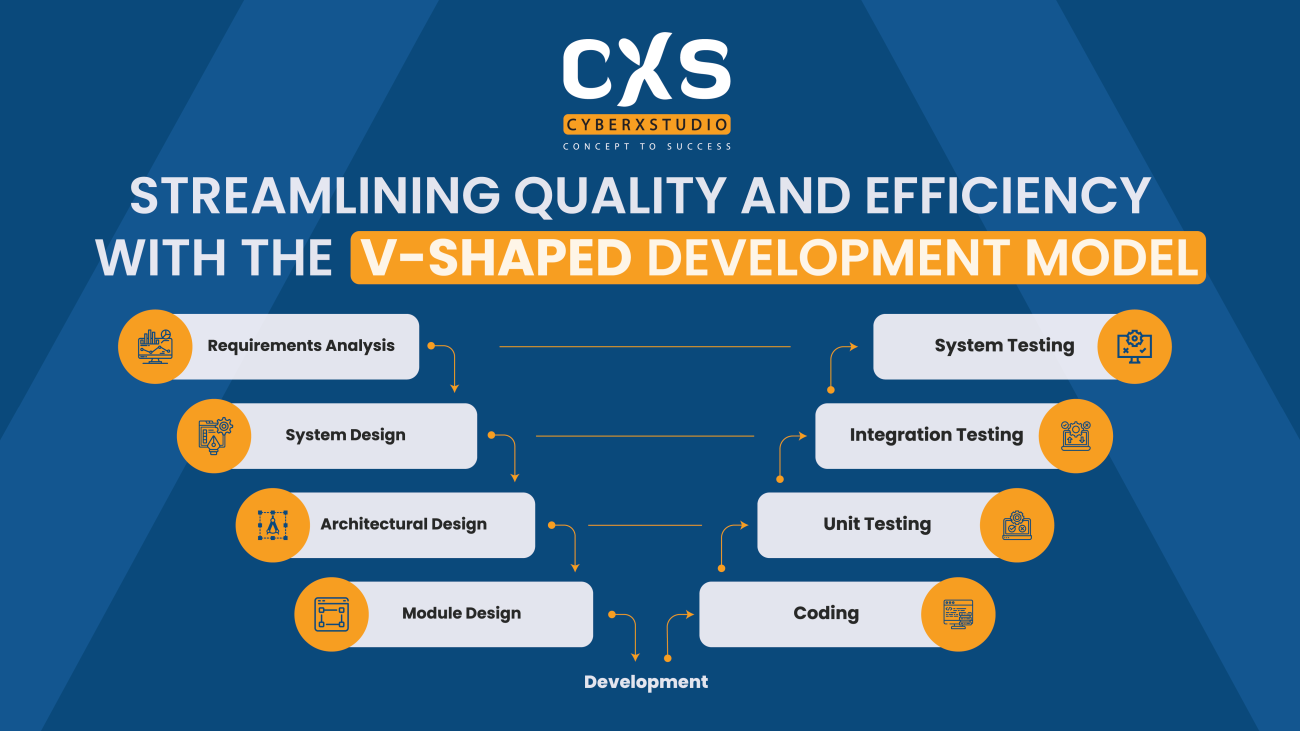Streamlining Quality and Efficiency with the V-Shaped Development Model
The V-shaped development model is a crucial framework in software engineering that emphasizes verification and validation throughout the software development lifecycle (SDLC). This model is particularly beneficial for projects allowing teams to streamline quality assurance and enhance overall efficiency. In this blog, you will get a detailed guide about what is vV-Sshaped Mmodel, its stages, benefits, and more.
What is the V-Shaped Model Concept?
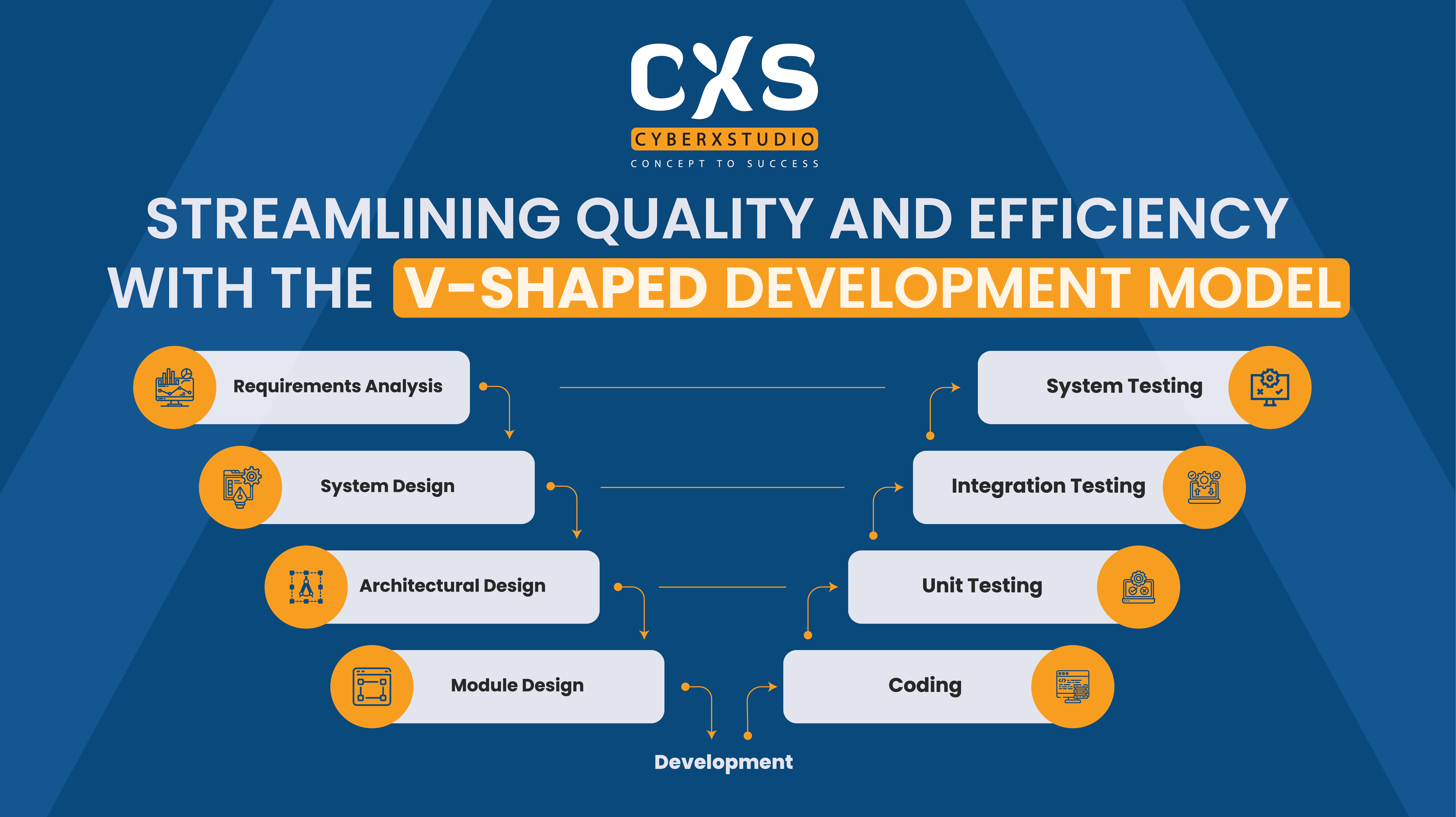
The V-Shaped Model also known as the Verification and Validation (V&V) model, is a software development lifecycle (SDLC) approach that emphasizes early and rigorous testing throughout the development process.
The V-Shaped Model visually represents the relationship between each development phase and its corresponding testing phase, creating a “V” shape. The left side of the “V” outlines the development stages, while the right side focuses on the testing and validation stages. Each development phase has a related testing phase, ensuring that quality checks are integrated throughout the process. The model prioritizes early planning for testing, which helps identify and mitigate risks before they escalate. This structured approach leads to a more reliable software product that meets customer expectations.
Stages of V-Shaped Life Cycle Model
The V-Sshaped Mmodel consists of several key stages:
Requirements Analysis: This phase involves understanding the customer’s requirements and expectations for the software. The acceptance test design planning is done at this stage.
System Design: The system design phase involves designing the complete hardware and communication setup for the product under development. The system test plan is developed based on the system design.
Architectural Design: In this phase, the architectural specifications are understood and designed. The system design is broken down further into modules taking up different functionalities. The integration tests can be designed and documented during this stage.
Module Design: The detailed internal design for all the system modules is specified in this phase. The unit tests are designed based on the internal module designs.
Coding: The actual coding of the system modules is performed in the coding phase. Before the final build is checked, it is subjected to several code reviews and optimized for maximum performance.
Unit Testing: During this validation phase, the code is subjected to unit tests created during the module design stage. Unit testing is performed to ensure that each module meets its specifications.
Integration Testing: Integration testing is performed to ensure that the different modules work together as expected. It is based on the integration test plan developed during the architectural design phase.
System Testing: System testing is performed to ensure that the complete system meets the specified requirements. It centers around the system test plan created during the system design stage.
Acceptance Testing: Acceptance testing is performed to ensure that the system meets the customer’s requirements. It is based on the acceptance test design planning done during the requirements analysis phase.
Maintenance: In the maintenance phase, the software is maintained to ensure that it continues to meet the customer’s needs and expectations.
Advantages of V-Shaped Model
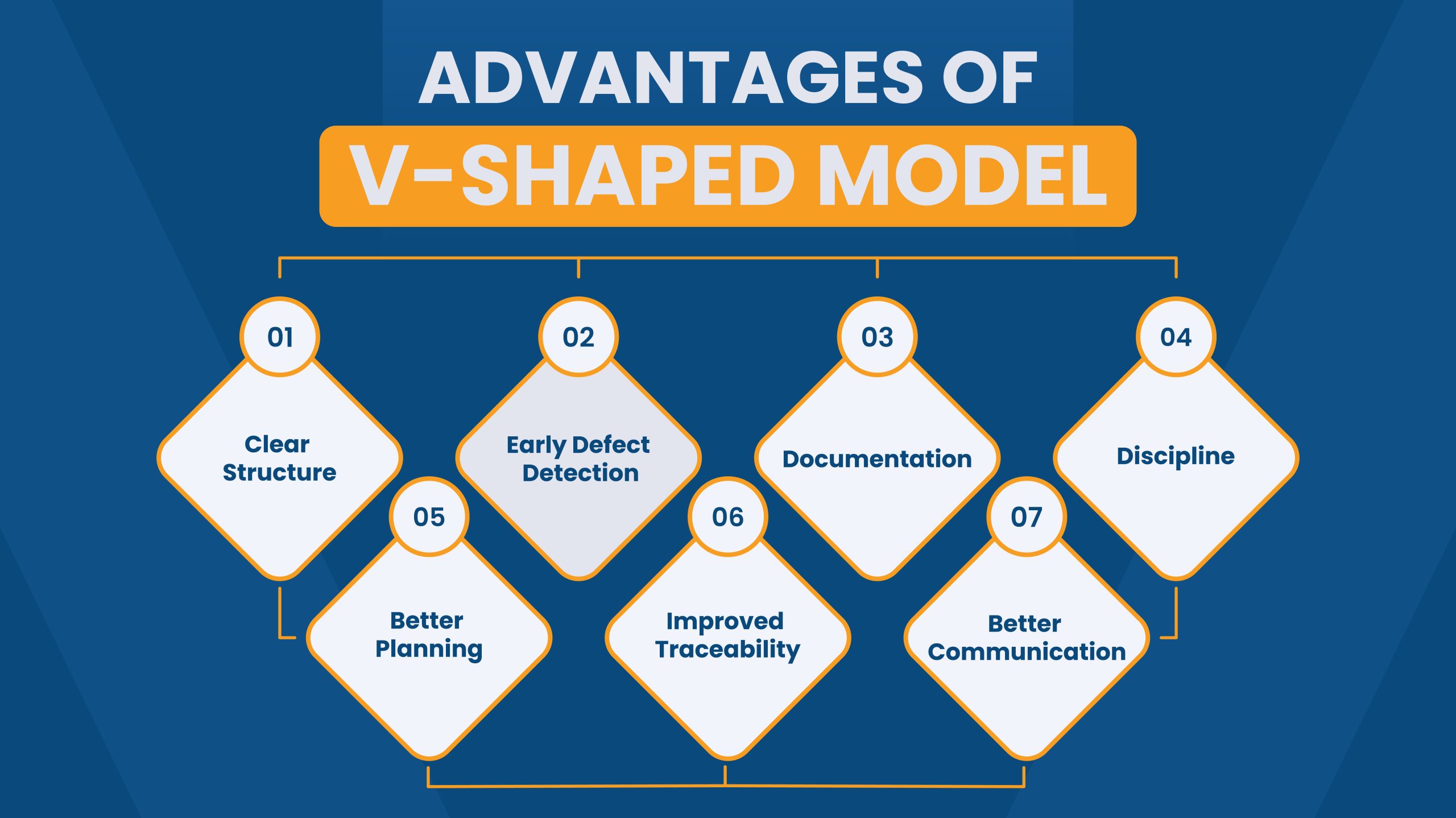
- Clear Structure: The V-Shaped Model provides a clear and straightforward path for development and testing, ensuring each phase is completed thoroughly before moving on.
- Early Defect Detection: Continuous verification and validation at each stage help in early detection and correction of defects, reducing the cost of fixing issues later.
- Documentation: Extensive documentation at each stage provides a clear reference and ensures that all requirements are met.
- Discipline: The sequential approach promotes a disciplined and organized development process, enhancing the quality and reliability of the final product.
- Better Planning: Detailed upfront planning helps in better resource allocation and project management.
- Improved Traceability: The V-Sshaped Mmodel provides a clear link between the requirements and the final product, making it easier to trace and manage changes to the software.
- Better Communication: The precise and defined structure of the V-Sshaped Mmodel helps to improve communication between the customer and the development team.
Disadvantages of V-Shaped Model
- Inflexibility: The rigid structure makes it difficult to accommodate changes once the project is underway.
- High Dependence on Initial Requirements: If the initial requirements are not well-understood or change over time, it can lead to significant rework and delays.
- Time-Consuming: The V-Shaped Model can be time-consuming, as it requires a lot of documentation and testing.
- Not Suitable for Complex Projects: For large and complex projects, the V-Shaped Model may be less effective due to its linear and sequential nature.
Example of the V-Shaped Model
Imagine a project to develop a new inventory management system for a retail company. The V-Shaped Model would begin with detailed requirement analysis, identifying the specific needs of the company, such as tracking stock levels, managing orders, and generating reports.
Next, the system design phase would outline the overall architecture, followed by high-level and low-level designs detailing each module, such as the inventory database, user interface, and reporting tools.
During implementation, each module is coded according to the design specifications. Unit testing is performed on individual modules, integration testing ensures these modules work together, and system testing verifies the complete system against the requirements. Finally, acceptance testing by end-users confirms the system meets their needs.
V-Shaped vs. Waterfall Model: Which is Right for Your Project?
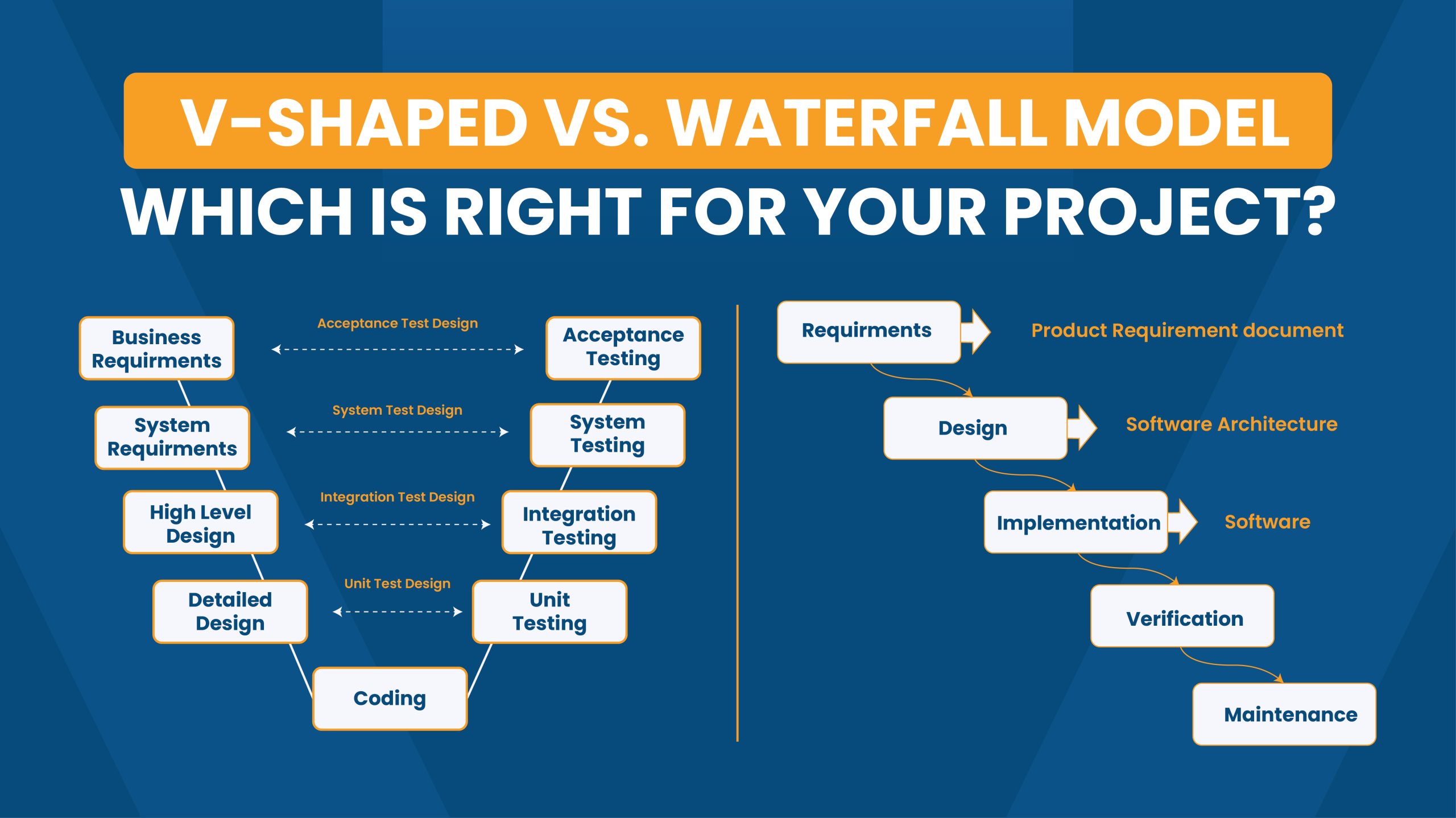
The V-Shaped Model extends the Waterfall approach by incorporating corresponding testing phases for each development stage. This model emphasizes thorough validation and verification, ensuring that issues are detected and resolved early. It is particularly suitable for projects where requirements are well-defined and unlikely to change, such as systems with strict compliance needs. The V-Shaped Model offers better quality assurance through continuous testing but can be rigid and less adaptable to changes once development is underway.
The Waterfall Model follows a linear, sequential process where each phase must be completed before moving to the next. This model is easy to manage, making it ideal for small to medium-sized projects with stable requirements. However, it lacks integrated testing at each phase, which can lead to late discovery of issues. The Waterfall Model is best for projects with clear, unchanging requirements but may struggle with accommodating evolving needs.
V-Shaped vs. Agile Model: Which One is More Effective?
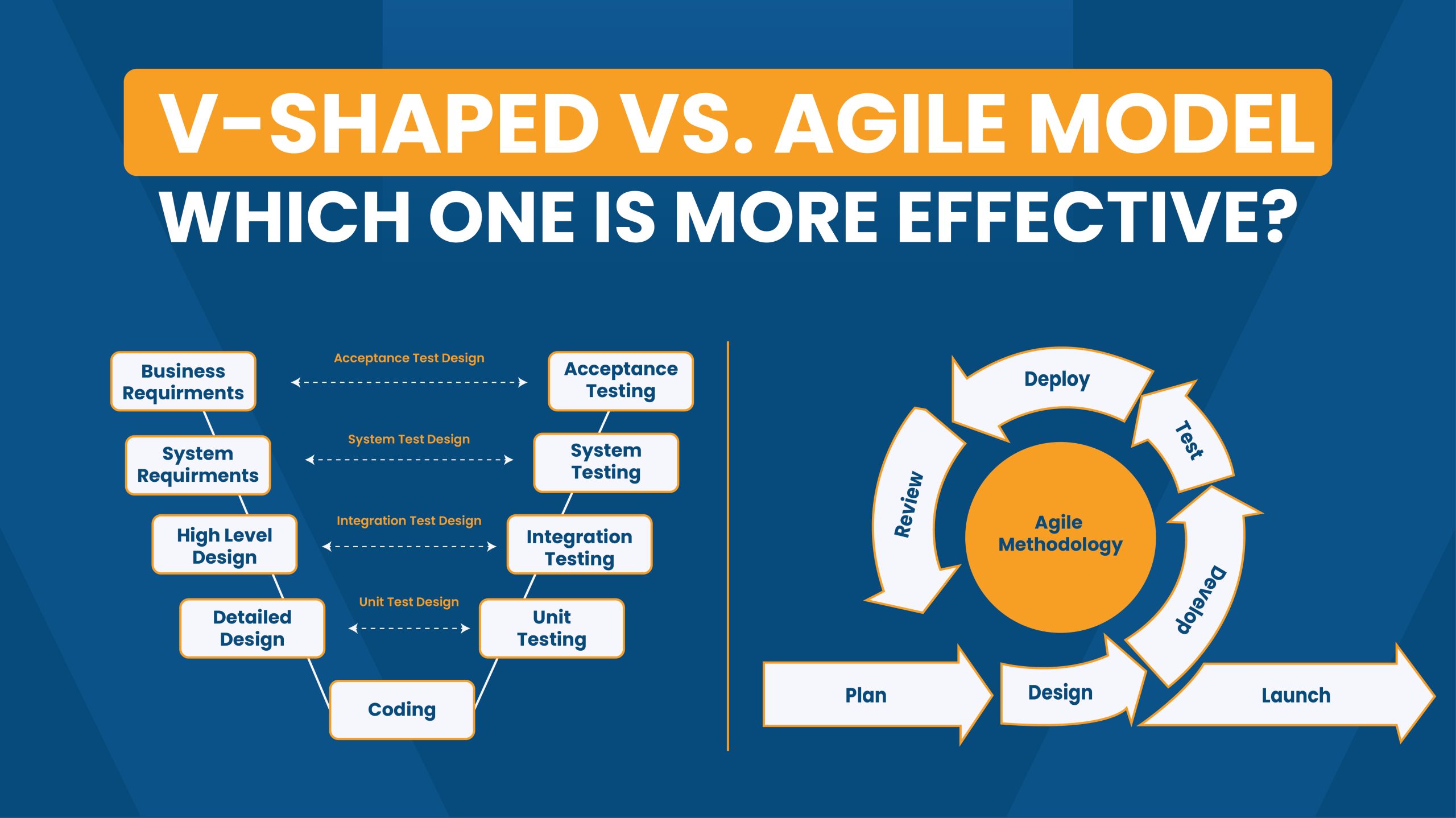
The V-Shaped Model is structured and sequential, making it less flexible than Agile methodologies, which promote iterative development and adaptability. Agile allows for continuous feedback and adjustments throughout the development process, while the V-shaped model requires a more rigid adherence to the initial plan.
For projects that require flexibility, rapid changes and frequent iterations, Agile may be the better choice. However, for projects with well-defined requirements and a strong emphasis on testing, the V-shaped model can provide a disciplined approach that ensures quality.
Conclusion
The V-shaped model is a valuable framework in software engineering that emphasizes quality and efficiency through structured development and testing phases. While it offers several advantages, including clear communication and early defect detection, its rigidity and high costs may limit its applicability in certain projects. Understanding the strengths and weaknesses of the V-shaped model is essential for selecting the right approach for your software development needs.
About CyberX Studio
CyberX Studio is a one-stop solution to all your digital marketing problems. We transform your business’s digital presence by rendering data-driven, timely and well-strategized services. Collaborate with us and let the magic begin!
Frequently Asked Questions
How to plan a project using the V-shaped engineering model?
To plan a project using the V-shaped model, begin by clearly defining the project requirements. Develop a detailed project plan that outlines each phase of development and its corresponding testing phase. Ensure that testing is integrated into the planning process from the outset, allowing for early identification of potential issues.
What is the V-shaped model in system engineering?
In system engineering, the V-shaped model represents the relationship between the development lifecycle and the corresponding verification and validation processes. It emphasizes the importance of thorough testing and validation at each stage, ensuring that the final product meets both technical specifications and user needs.
When should I use the V-shaped model for my project?
The V-shaped model is ideal for projects with well-defined and stable requirements, where rigorous testing and high reliability are critical. It is particularly suitable for projects in regulated industries or those requiring thorough validation at each development stage.
Which model is better for complex projects with high levels of uncertainty?
For complex projects with high levels of uncertainty, the agile model is often preferred over both the V-shaped and waterfall models. Agile offers flexibility and iterative development, making it better suited to handle changes and evolving requirements throughout the project lifecycle.
What is the best approach for a project with fixed requirements and a tight deadline?
For projects with fixed requirements and a tight deadline, the Waterfall Model can be effective due to its straightforward, linear process and focus on completing each phase before moving to the next. However, if quality assurance is a high priority, integrating some V-shaped model testing principles may be beneficial.

